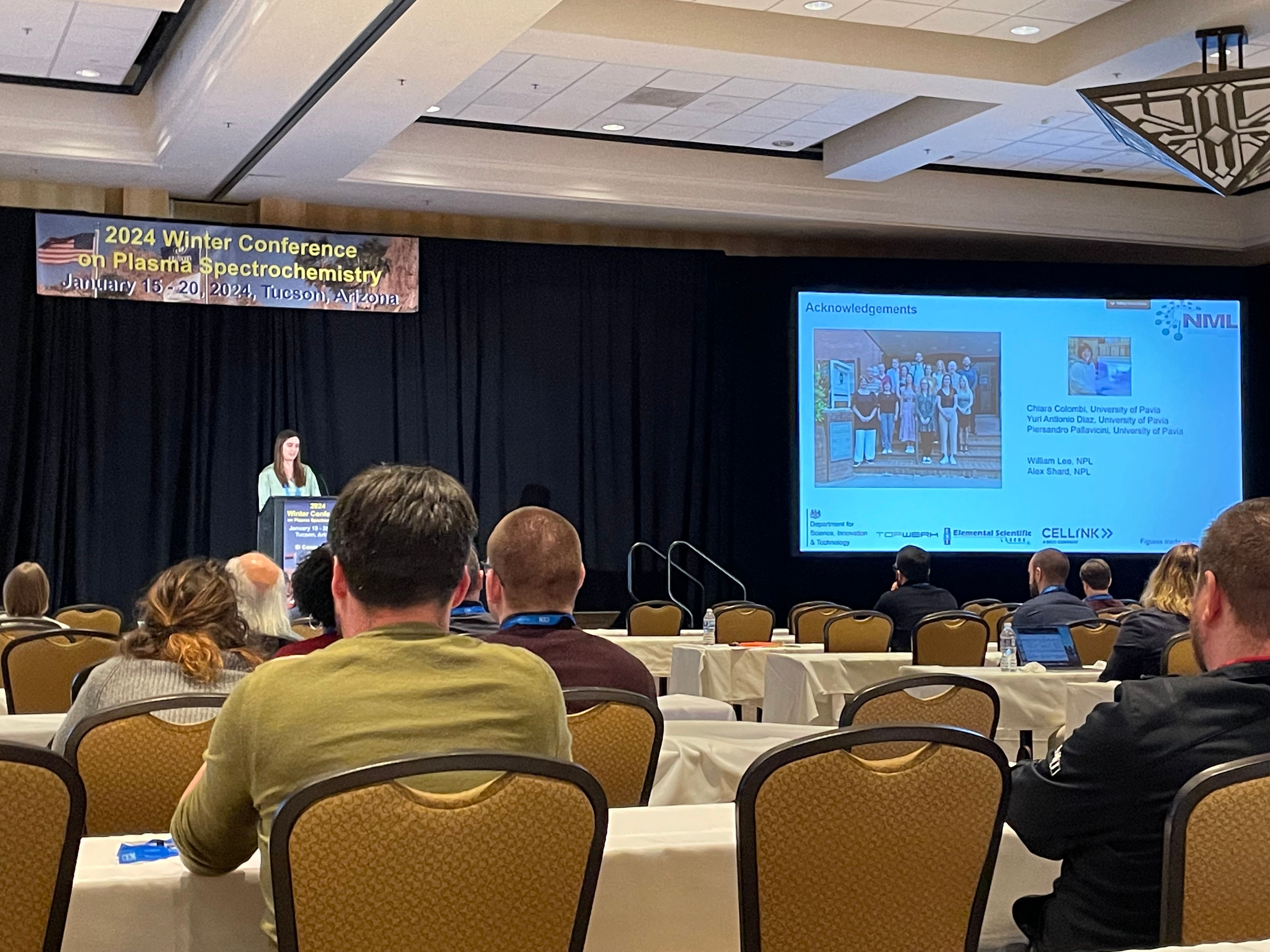Improving Calibration Standards for LA-ICP-TOF-MS Imaging
An oral session at the Winter Conference on Plasma Spectrochemistry examines multi-elemental quantitative laser ablation-inductively coupled plasma-time of flight-mass spectrometry (LA-ICP-TOF-MS).
Kharmen Billimoria of the National Measurement Laboratory at LGC presented a talk on improved calibration standards for multi-elemental quantitative laser ablation inductively coupled plasma tandem mass spectrometry (LA-ICP-TOF-MS) at the Winter Conference on Plasma Spectrochemistry in Tucson, Arizona on Jan. 15.
Kharmen Billimoria speaks at the Winter Conference on Plasma Spectrochemistry. | Photo Credit: © Will Wetzel

Billimoria’s talk focused on her work automating the production of calibration standards with a biological matrix. Commenting on how the scientific community is pushing automation for this process, Billimoria began her session by outlining the current calibration standards for LA-ICP-TOF-MS (1).
Current calibration standards are often incompatible with biological matrices and Billimoria presented a novel strategy that used nano-doping technology with LA-ICP-TOF-MS to characterize gelatin-based calibration standards that could be used for quantitative imaging (2). She discussed that lanthonide up-conversion nanoparticles (NPs) were used for her study because of their wide applicability in bioimaging (2).
The NP mixture that was put inside the instrument contained traces of titanium (Ti), cesium (Cs), and gold (Au), making sure their distribution was uniform to tune the laser (1). A bioprinting approach showed improvement between batch repeatability and elemental signal homogeneity at a 5 μm spatial resolution (2). Therefore, this allows for printing multiple standards simultaneously, which decreases analysis time and preparation time (2).
The results were promising. “Linearity is the true test of a calibration standard,” Billimoria said. The linear regression was calculated based on the average signal across all pixels. Despite a single line scan being present in the analysis, the calibration line displayed good linearity (1). The relative standard deviation (RSD) and expanded uncertainty of the average signal from the standard improved with larger ablation areas (1).
Billimoria’s talk addressed the timely topic of automation when combined with LA-ICP-TOF-MS. By using this bioprinting approach with LA-ICP-TOF-MS, Billimoria demonstrated that this method could produce multielement calibration standards that are matrix-matched for biological samples. She also suggested that this method has potential application with Raman spectroscopy and surface-enhanced Raman spectroscopy (SERS) imaging, since it promotes comparability across imaging experiments and over time (1).
References
- Billimoria, K. Improved Calibration Standards for Multi-elemental Quantitative LA-ICP-TOF-MS. Presented at the Winter Conference on Plasma Spectrochemistry, in Tucson, Arizona, January 15th, 2024.
- Billimoria, K.; Fernandez, Y. A. D.; Andresen, E.; Sorzabal-Bellido, I.; Huelga-Suarez, G.; Bartczak, D.; de Solorzano, C. O.; Resch-Gener, U.; Goenaga-Infante, H. The potential of bioprinting for preparation of nanoparticle-based calibration standards for LA-ICP-ToF-MS quantitative imaging.Metallomics 2022, 14 (12), mfac088. DOI: 10.1093/mtomcs/mfac088